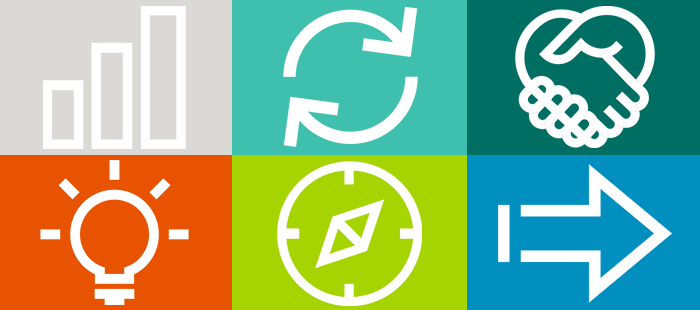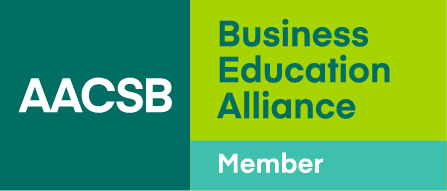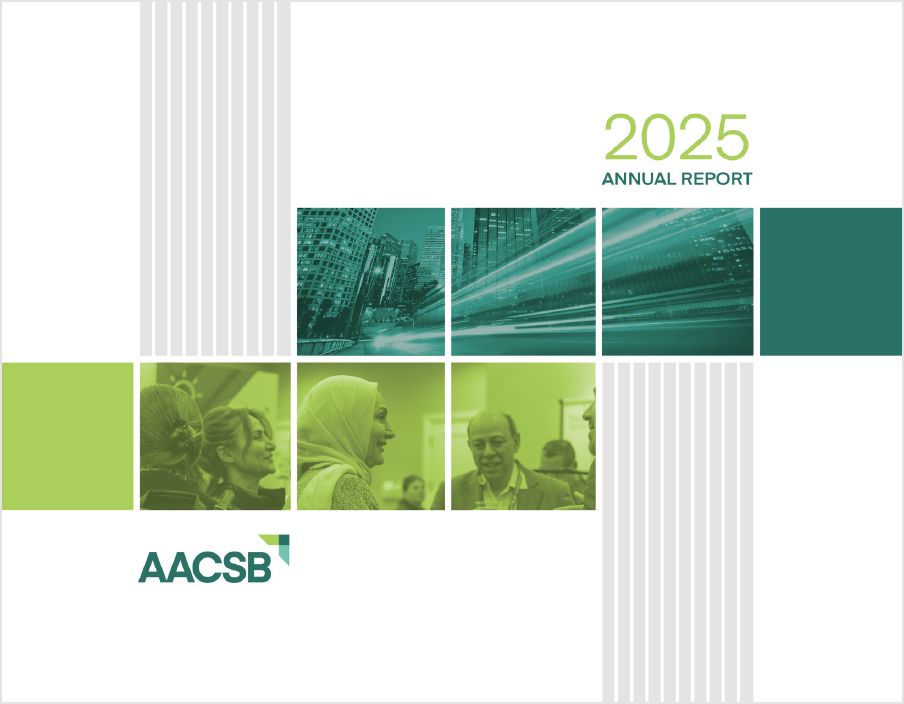The Servitization Challenge
It's a typical Monday morning at a top business school in the year 2050. There are no “students” or “participants” here; rather, learners are referred to as “members.” Numbering in the thousands, they subscribe to personalized portfolios of learning moments that range from an on-campus Finance for Executives program to video chats with specialized career advisors.
Welcome to the business school for the lifelong learner. Here, learning advisors leverage advanced data analytics to help members tap into a wealth of learning opportunities and follow personalized development journeys. Schools offer this compelling service through a fee-based subscription model that calibrates automatically, based on an individual’s achievement of agreed-upon goals.
Does this seem like a utopian vision? Perhaps. Yet, in the wake of the COVID-19 crisis, we cannot help but wonder if business education, like so many other sectors, is due for a fundamental change. In fact, the crisis has catalyzed several trends that already had been impacting the industry:
The demand for the reskilling of the workforce. As this demand rises, schools have the opportunity to devise innovative development solutions that will make it possible for workers to attain new competencies.
The adoption curve of web-conferencing technology. Because lockdowns have forced companies to experiment with remote working, schools have quickly integrated online learning into their delivery systems.
A surge of interest in learner-driven education. The fluctuating job market has obliged many individuals to take learning into their own hands. As a result, education providers in every category have seen an extraordinary increase in their enrollments.
One-off programs such as MBAs and exec ed courses will no longer suffice.
The net effect of these and other trends is that, in the future, education is likely to be continuous, learner-led, and accessible always and anywhere. This means that one-off programs such as MBAs and executive education courses—transformational learning events once considered the sole vehicles for management development—will no longer suffice.
Could this new paradigm threaten business schools and their relationship with learners? If so, how might schools respond? One way is by shifting from a product-centric business model to a service-oriented approach. We believe that this strategy, commonly referred to as servitization, will enable business schools to continue to thrive in the era of lifelong learning.
A Strategic Shift
In the digital age, professionals are well aware that they must continuously upgrade their skills. In “How the Workforce Learns in 2019,” Harvard Business Publishing and the upskilling platform Degreed share insights about what today’s learners think about their current development opportunities. These workers not only demand that learning be a component of their day-to-day work lives, but also want to decide what to learn and where, and they expect to merge traditional methods with new approaches enabled by technology.
Business schools need to deliver learning the way these professionals prefer to acquire it. As Harvard economist Theodore Levitt observed, “People don’t want a quarter-inch drill; they want a quarter-inch hole.” Over decades, business schools have perfected their drills—namely, programs that build capabilities at specific career transitions or points in time. But what happens when individuals no longer are content with discrete moments of learning, but instead desire lifelong journeys that allow them to develop new knowledge and skills on an ongoing basis?
It is not enough for business schools to fine-tune the drill. They must restructure their traditional product offerings into services that help individuals remain employable over their entire professional lives. In essence, they must embrace the servitization of management education.
Demand for lifelong learning will drive business education to embrace a service-oriented model.
We expect that management education’s changeover from a product to a service will mirror similar shifts seen in other sectors. In the automotive industry, carmakers from Daimler to Toyota are experimenting with new ride-sharing businesses, as consumers begin to view cars as services rather than prized possessions. In the aviation sector, Rolls-Royce has moved from manufacturing airline engines to selling flight hours, with the value proposition being the promise of keeping a fleet airborne. While these examples might have to be adapted to work for management education, we still believe that market demand for lifelong learning will drive the business education industry to embrace a more service-oriented model.
After analyzing servitization patterns in other industries, we have developed a framework of primary changes schools will need to make along three main dimensions: the offering (what), the delivery process (how), and the relationship and related metrics (who and why). We also offer schools key lines of action they can follow in regard to each dimension. The objective: to give leaders a starting point for transitioning from a product- to a service-based model.
What: The Offering
The traditional value proposition of most business schools entails the promise of developing a student’s knowledge and skills via specific programs taught by knowledgeable faculty. As schools evolve to a lifelong learning paradigm, we expect that they will shift to a value proposition in which they support each individual on a personalized learning journey. This new model will combine any number of learning moments, including mentoring, coaching, microlearning, self-study courses, and peer-to-peer forums, in addition to traditional programs.
We suggest that schools follow these key lines of action:
Develop diverse portfolios of learning moments. Business schools will need to design interactions that engage learners on a daily, weekly, and monthly basis. Some offerings, like wellness coaching, might fall outside the usual scope of management education. Others, such as microlearning, require capabilities some schools have not mastered yet. As a result, schools might want to recruit specialized professionals to deliver these offerings or curate solutions from outside suppliers.
Define learning journeys for individuals. As business schools explore how to support learners over time, many will deploy learning architects who can design the overall vision for their services. Learning architects will collaborate closely with academics to choose appropriate technologies, profile learning types, and identify relevant learning moments for different types of individuals. Using this information, they will be able to determine how such moments can be integrated into cohesive learning journeys.
How: The Delivery Process
As management education becomes less cohort-based and more customized, the learning process will become less campus-centric, and the operational management of a school will become less efficient. This transition will require schools to develop new processes and technologies to guarantee greater flexibility in course delivery.
We suggest that schools follow these key lines of action:
Develop the technological capabilities to deliver personalized, seamless, and enjoyable learning journeys, at scale, to a wide range of individuals. To do this, institutions first must have platforms that engage learners, integrate a broad variety of learning moments, flexibly deliver learning in multiple formats, and generate meaningful recommendations through advanced analytics.
Schools must have platforms that engage learners and integrate a broad variety of learning moments.
Second, schools must assemble a pool of professionals—including community managers, videographers, and data scientists—to manage and maintain the technology. These capabilities are not commonly found among the ranks of most business schools, so covering them probably will require external vendors and talent. At the same time, schools must make sure faculty have the support to upgrade their teaching skills so they can leverage whatever new tools are available.
Build an ecosystem of academic and nonacademic partners. As schools build their suites of offerings and grow their enrollments, they will see an exponential increase in demand on their resources. Clearly, it will be neither sufficient nor economically viable to rely on faculty to carry this expanded load, so schools might consider partnering with orgnizations that can execute learning activities around the globe. These partners should include social community moderators, career mentors, project work tutors, and others who can participate in face-to-face interactions.
Who and Why: The Relationship
The third and most challenging disruption for any school will be managing the change in its relationships with learners as the institution migrates from collecting one-off fees for programs to implementing subscription models for services. Individuals will choose learning options both because of a school’s recommendations (a push model) and because of their own goals (a pull model). In this new framework, business schools will have to continuously diagnose the evolving needs of learners and track the progress they have made in fulfilling those needs.
We suggest that schools follow those key lines of action:
Develop commercial/advisory roles to support individuals in their learning journeys. Serving lifelong learners will require schools to think beyond the traditional points of contact with clients—admission, delivery, and alumni support. Institutions must deploy learning advisors who will guide members through the available offerings and ultimately help them organize and manage their own self-development.
Define assessment tools and outcome-based performance metrics. As business schools move from a transactional to a relational business model, they’ll require robust metrics that will allow them to assess the competencies individuals acquire over time. It no longer will be enough to gauge teaching effectiveness by surveying student satisfaction at the end of the program, or to prove assurance of learning by measuring post-program salary increases. These metrics shed little light on the ways learning triggers actual behavioral change.
It is intrinsically difficult to make a causality link between learning and performance. However, corporations and platform providers are already using new technologies such as AI to validate skills acquisition. These efforts indicate the industry intends to create diagnostic and impact models to assess the impact of learning on professional goals—assessments that will be critical as business schools transition to a service-based model.

Adopting a servitization model will require business school administrators and educators to change their mindsets across several dimensions. They must transition from offering one-off programs to providing portfolios of ongoing learning moments; they also must stop relying on internal faculty to deliver education and begin drawing on a range of educational delivery partners.
Long-Term Aspirations
Undoubtedly, most deans find the idea of developing new business models a disruptive proposition. But the COVID-19 crisis has heightened the uncertainty surrounding the future of higher education. We should not waste the opportunity it provides. We should leverage the sense of urgency it has created to define a bold new vision for management education—and develop the corresponding blueprint for strategy.
In a recent interview with Knowledge@Wharton, Infosys president Ravi Kumar says, “We have not yet determined who the real custodian of lifelong learning is. Is it the employer, the employee, or the ecosystem one learns and works in?”
We suggest that any school with an appetite for change should first answer Kumar’s question. To do this, academic leaders should engage key stakeholders in a scenario-planning conversation to define the role they want their schools to play in the future space for management development.
Next, leaders should identify the key lines of action for their institutions and determine what controlled experiments they can run to explore these actions. Deans and their management teams could treat these experiments as learning labs—low-cost, limited-risk ways to test elements of their eventual solutions. In the process, they will develop new capabilities that match their long-term aspirations.
Are business schools ready to embrace the servitization challenge? In the words of Abraham Lincoln, “The best way to predict your future is to create it.” Only by revisiting the way learning is delivered can business schools prepare themselves for what is to come—whatever that may be.






